Validating Depictions of Technology and Engineering in Videogames
Learning is now gaming; whether it be for the purpose of learning like language learning phone apps, or 'fun', like building fusion reactors in Minecraft.
There are a lot of video games. Recently, I have been taking some of my free time to play World of Warcraft—a version from 2004 that does not have 20 years of updates behind it. The game has lightning bolts that come out of thin air and a lot of other fantasy elements. I have been playing with a friend from the Netherlands who has been teaching me some of the intricacies and culture of the community. World of Warcraft’s community–not the Netherlands.
On the other hand, a game that I have been playing by myself is a modified version of Minecraft: a “modpack”, which is a large amount of modifications or “mods” organized together to create specific progression, rules, and experiences that are far from what you would find in the “vanilla” or unmodified game. Actually, I stopped playing the game because I accidentally blew up the chemical processing line that was supposed to make “H8N4C204 Rocket Fuel” from “1,1-Dimethylhydrazine” and “Nitrogen Tetroxide”.
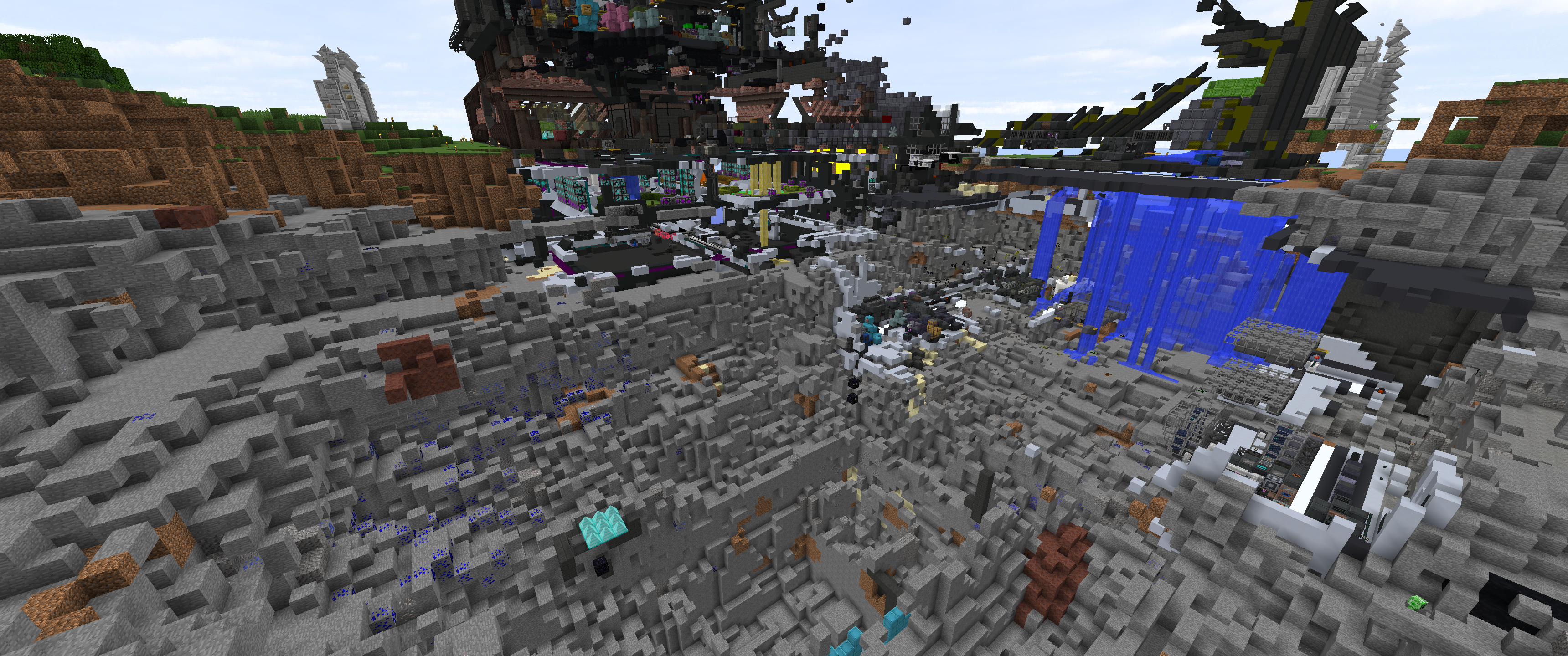
Large crater. Not my picture, I was too devastated to take one of my own world.
A quick google search of the H8N4C204 rocket fuel leads to a wikipedia page of “RP-1” which is
(alternatively, Rocket Propellant-1 or Refined Petroleum-1) a highly refined form of kerosene outwardly similar to jet fuel, used as rocket fuel.
RP-1 is a fuel in the first-stage boosters of the Electron, Soyuz, Zenit, Delta I-III, Atlas, Falcon, Antares, and Tronador II rockets. It also powered the first stages of the Energia, Titan I, Saturn I and IB, and Saturn V. The Indian Space Research Organization (ISRO) is also developing an RP-1 fueled engine for its future rockets.
The modpack starts with making tools like shovels and pickaxes from flint and wood, and progresses through coking— refinement of fossil fuels into more carbon pure sources—, steel production through a blast furnace, electronic circuits, and then a ride through voltage levels. Low voltage, medium voltage, high voltage— LV, MV, and HV. Then EV— wait, whats the E for? Oh, it then goes Extreme, Ludicrous, ZPM or “zero point module” which is an “voltage” from the Sci-Fi universe of the TV show Stargate. The game goes past all realistic technological advancement and into science fiction from other worlds, and creates some of its own. If you get that far.
Getting to the end of the modpack’s progression takes around 3,000 hours for a single player. When I told friends what I was working on in-game, they told me I should be getting paid for my work. It was so complex that they thought it couldn’t be fun, and they compared it to a job.
One of the most popular of the “factory building” games, “Factorio”, was inspired partly by two Minecraft mods, “IndustrialCraft” and “BuildCraft”. IndustrialCraft dealt with energy generation, material processing, and neat gadgets like mining drills that are battery powered instead of pickaxes made with two sticks and three ingots (or wood planks. Or diamonds.) BuildCraft dealt with automation primarily, and with the two combined, you could build a crude factory to automate processing.
Normally, in vanilla or unmodded Minecraft, you would mine ore, put it in the furnace, and 1 ore would “smelt” or process into one ingot.
With IndustrialCraft and BuildCraft, one of the most common processing lines would be Storage -> Macerator (turns one ore into two dust) -> Furnace (turns one dust into one ingot) -> Storage.
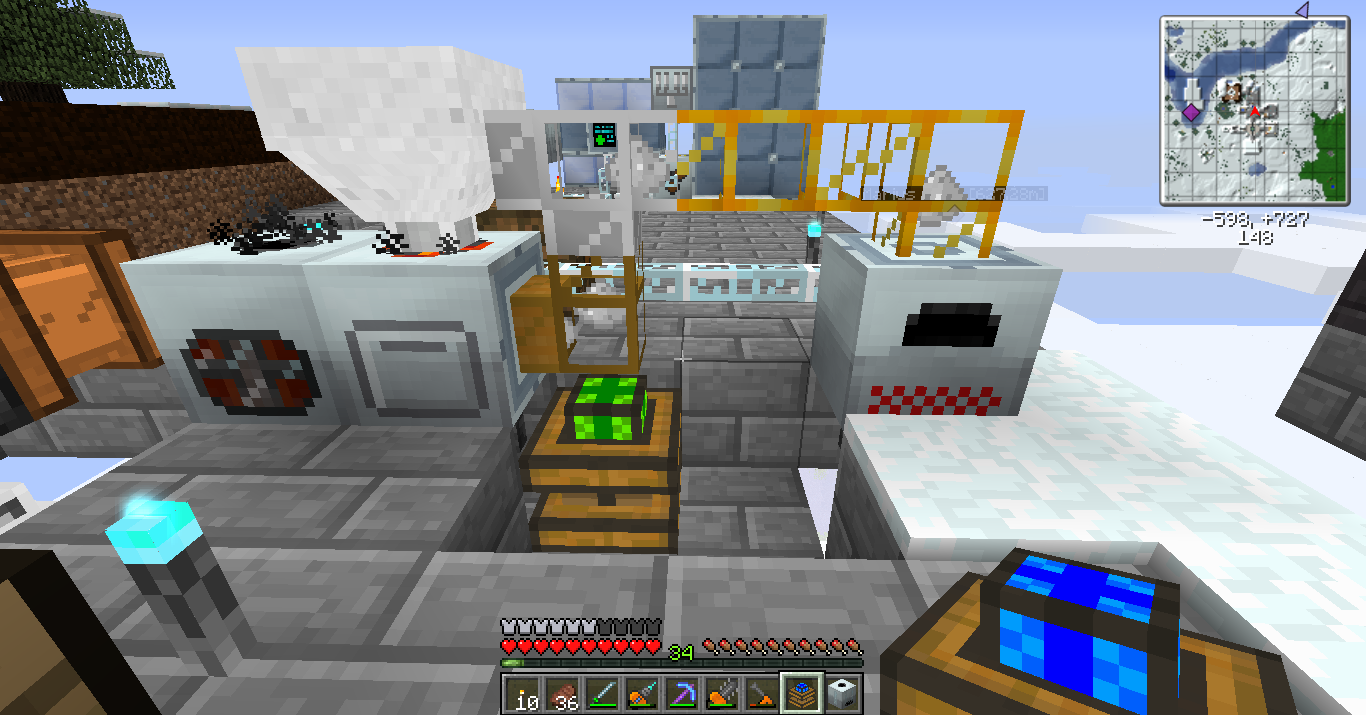
A “Hopper” (top left) on top of macerator dispenses ores automatically, engine and pipe on right side of machine pipes out the output slot into the machine on the far right, the electric furnace. The far left machine is not used in the automated process.
Instead of manually replacing ore in the furnace by hand— you can only put in 64 ore at once— you could put hundreds in storage, have it pumped into the processing line, and double the ingot output in the process. Aditionally, you could combine this with a BuildCraft Quarry, which would dig down in a large radius (9x9 minimum). You could pipe the products from the quarry, filtering out dirt and stone, to a storage unit that only held ores. The processing was slow so you could even make parallel processing, multiple lines which would do the same job at the same time.
Factorio is dependent upon these concepts: the base of the game is automated resource gathering—the rest of the game is processing and crafting those ingredients into other things that leads to further progression. The end of Factorio is launching a rocket into space. Factorio is also less focused on realism and more interested in logistic puzzles. (It’s also having a highly anticipated update soon!)
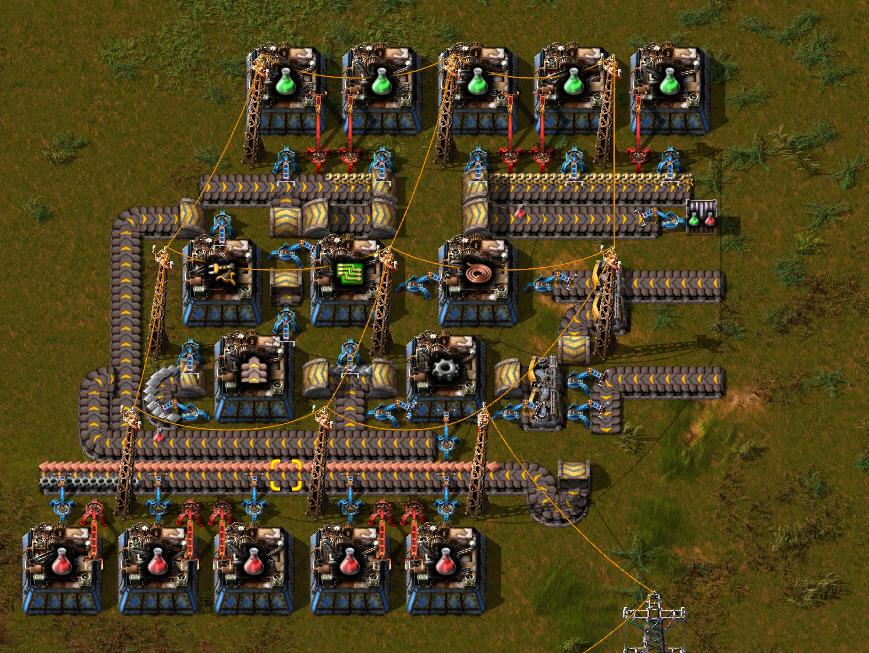
Conveyor belts move everything everywhere in Factorio, and making compact processing lines can make all the belts look like spaghetti in a unorganized pile. But if it works, it works.
The modpack I played was called “GregTech: New Horizons”, which is centered around the mod “GregTech” which was originally an addon to IndustrialCraft after a developer wanted to make IndustrialCraft more realistic. Is it more realistic? Yes, it is extremely realistic. Is it more fun? Well, the latter half of GregTech deals almost entirely with chemical and material processing, just like in real life. So you need about 500+ different storage units for the various chemicals that are not used for anything but making other chemicals. The “flowcharts” for the modpack are something else:
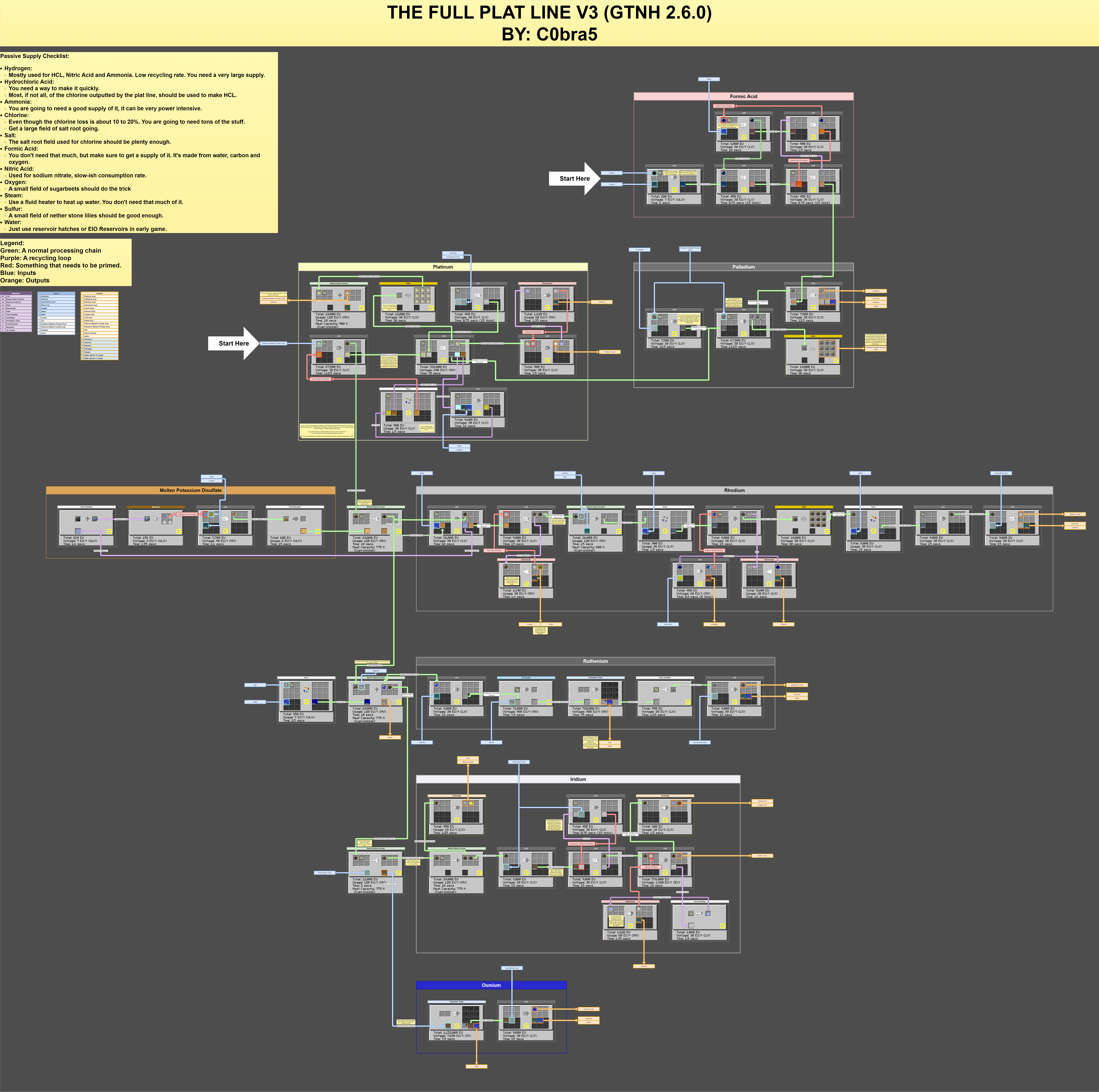
This image is 7mb, feel free to save or open in new tab and zoom in for all the details. I hope google’s web hosting service I use doesn’t kick me off their free plan for the network traffic this generates.
The picture above is a flowchart explaining platinum group metal refinement and creation. Platinum ore gives you platinum metallic powder dust which then is mixed with Aqua Regia (mixture of Nitric and Hydrochloric acid at a ratio of 1:3). This is because the platinum metallic powder gotten by the ore is impure—contains the “platinum group metals” which are platinum, palladium, rhodium, iridium, osmium, and ruthenium. Aqua Regia, which is latin for “regal” or “royal water”, was named this way because Alchemists used to use it to dissolve noble metals like gold and platinum. It separates the metals in platinum and allows purification of pure platinum.
Though it takes around 6 steps to purify platinum, the chart also shows how to get most metals from the platinum group, like Rhodium and Ruthenium.
In fact, there are a lot of videos online talking about how to isolate platinum, palladium, and rhodium from catalytic converters. And after too much time online I can confirm that the platinum refinement process in GregTech is very accurate. Here is a website featuring platinum mining and refinement. Most of it is steps in the process, not detailing what the exact reagents are.
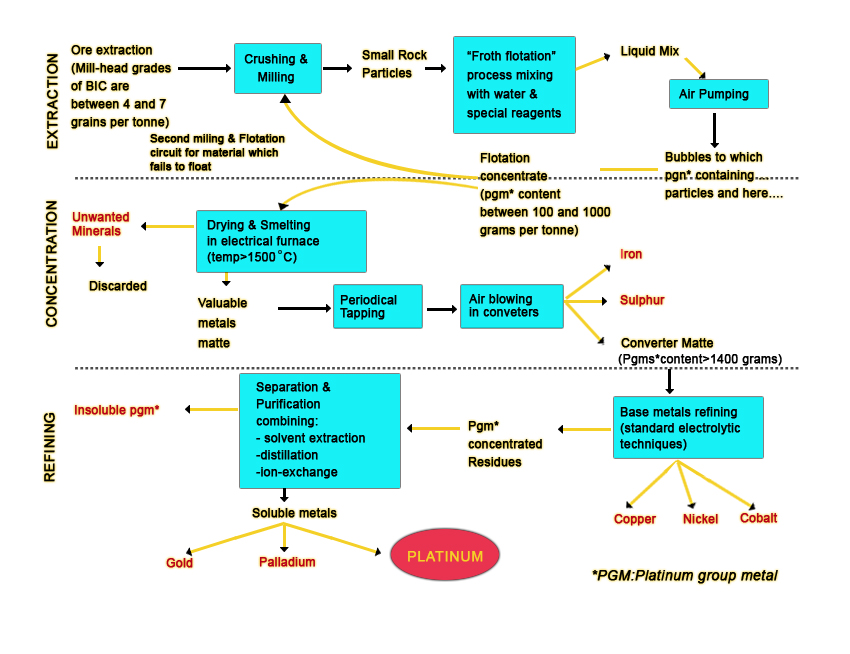
Another game that I played called “Cell to Singularity” is an incremental resource game. If you’ve ever heard of “Cookie Clicker”, its like that. Except instead of every click produces one cookie, you can buy a grandma with 10 cookies to bake a cookie every second, and then a cookie factory at 100,000 cookies that makes 100 a second… the main resource is entropy, and the producers and upgrades are based around the necessary steps from the start of Earth to production of a singularity. Which I think is a “point” or area where gravity becomes infinitely strong and the laws of physics break down.
You progress from the “primordial soup” on Earth, going from prokaryotic cells, eukaryotic cells, sponge, jellyfish, flatworm, fish, fungi, tetrapod, mammal, ape, human… and then cyborg, superhuman, and humanoid colonist. Whereas in the “cells” part of the progression you unlock things like RNA, DNA, and proteins— when you get to humans you start to get upgrades like technological innovations. Upgrades like speech, the plow, the printing press, calculus—and all are in chronological order.
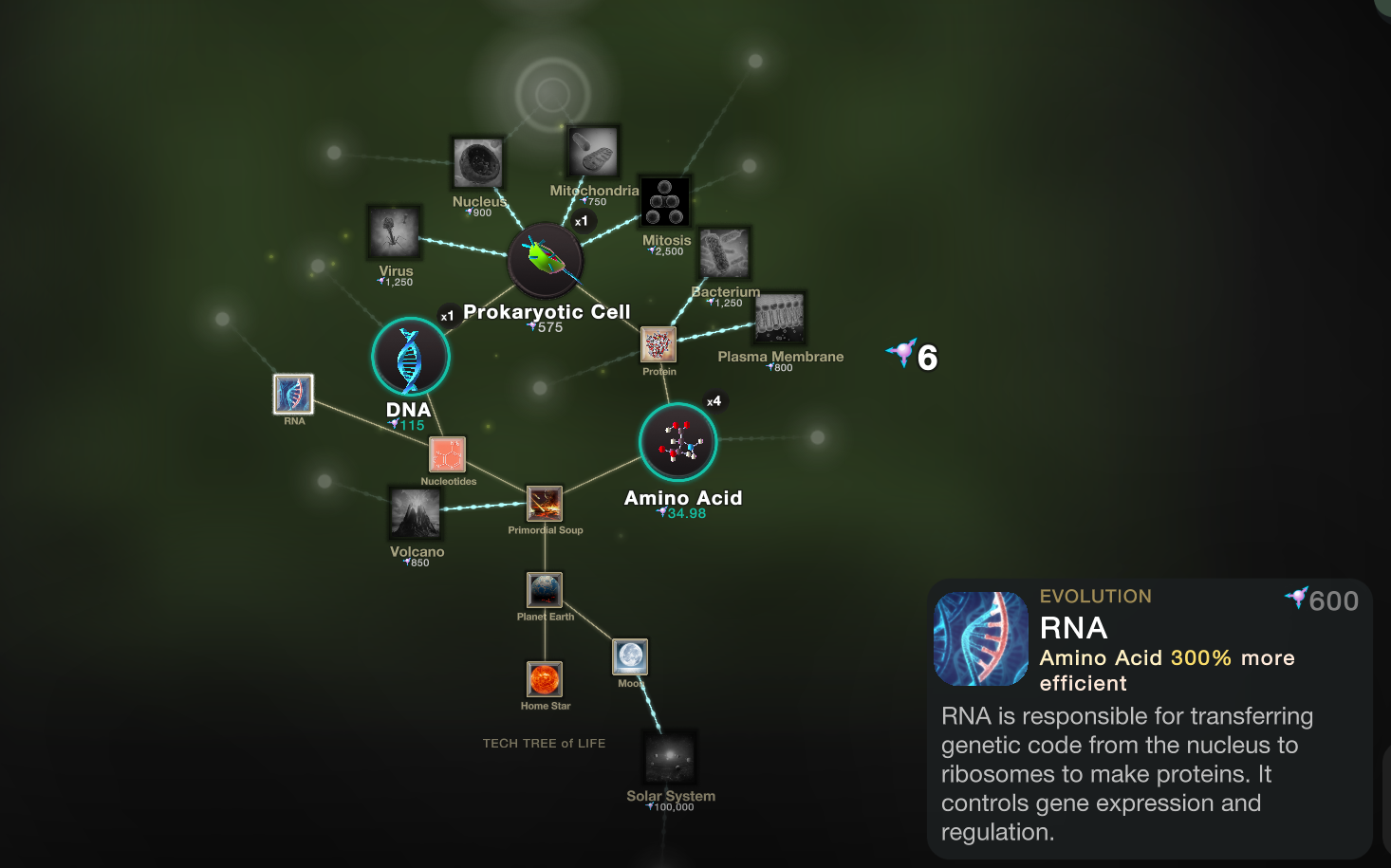
We rarely come across such indepth technological processes in media. When we do, its usually because the piece of media is focused on that technological process. Shows like “How It’s Made” focus on production of a specific item, but rarely does it get into depth on more complex processes, or force you to gain a comprehension of the technologies leading up to it.
I want to emphasize a few points that this article has inherent in the text:
Video games as a teaching media.
Because games particularly force you to have comprehension or control of mechanics in order to progress, you can fit in dense information in a game in order for it to be learned. If you search for video games as education, or gaming in general used for education, a lot of research or conversation focuses around gamification of things like language learning that simplify down to trivia games that earn points, but serve little purpose in an overall system of mechanics. Admittedly, it is rare and also difficult that complex information can be fit into something that looks to be a game first and educator second, but it is possible. One topic that is taught heavily and extremely well by gaming is programming. It would make sense, as programming is required knowledge if you want to make a game—some games even focus around programming or programming logic, using actual programming to do things like solve puzzles.
Video game variety.
Over half the world’s population owns a smartphone, which means access to games. Yet, a lot of the games that are popular or seen are usually simple, one-sided entertainment. Games that have more depth or require a lot of time are usually harder to find—they are not marketed to the casual audience. But I believe it is important to keep an open mind about the variety of media and the particular trends in modern media: what subjects are becoming popular and brought to the mainstream’s eyes.
Learning is fun, but could use direction.
I don’t often stumble into material sciences, but the particular game I was playing gave me a reason to. I realize I rarely have the opportunity to learn or go down rabbit holes. I am in three right now—everything mentioned in this article and me fact checking their existence, which was brought on partially by the games and also by me wanting to write this article. The other two are networking, which I need to learn about to fix my Church’s network after everything stopped working, and Carl Jung who a friend recommended me to read about. Though Jung is less of a rabbit hole: I don’t have an issue or goal, and I have a primary material (a book) that I’m using to guide me. I imagine many others have had nights where they go on Wikipedia and spend some time learning about a random topic. It’s fun, but as I get older, I realize that learning takes a lot of energy and focus, and is not always valuable. I can’t apply material sciences to anything that will help me get a job, unfortunately. (Unless its technical writing).
Additionally: you can see from this piece that I am very passionate about learning. Often, you try to share your interests or new learnt material with people around you and they shut you down or don’t care. Video games provide a community to find people of similar interests—and something to do with those people.